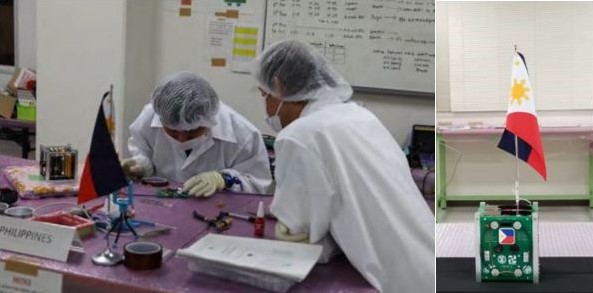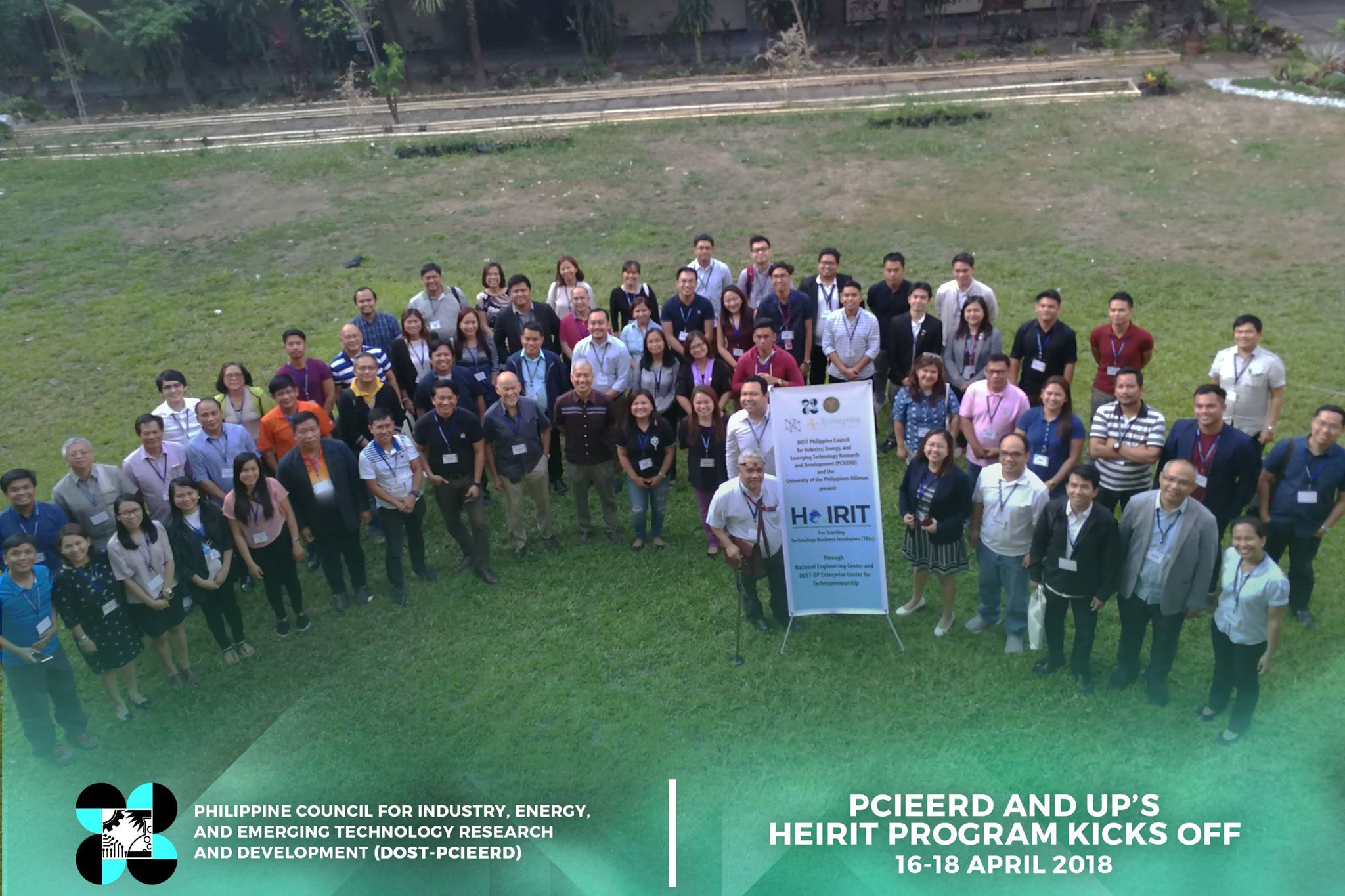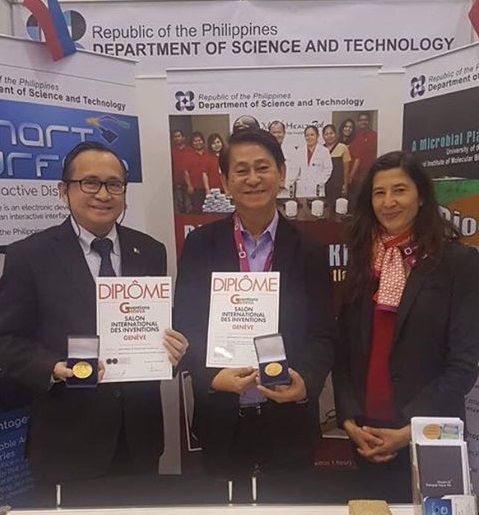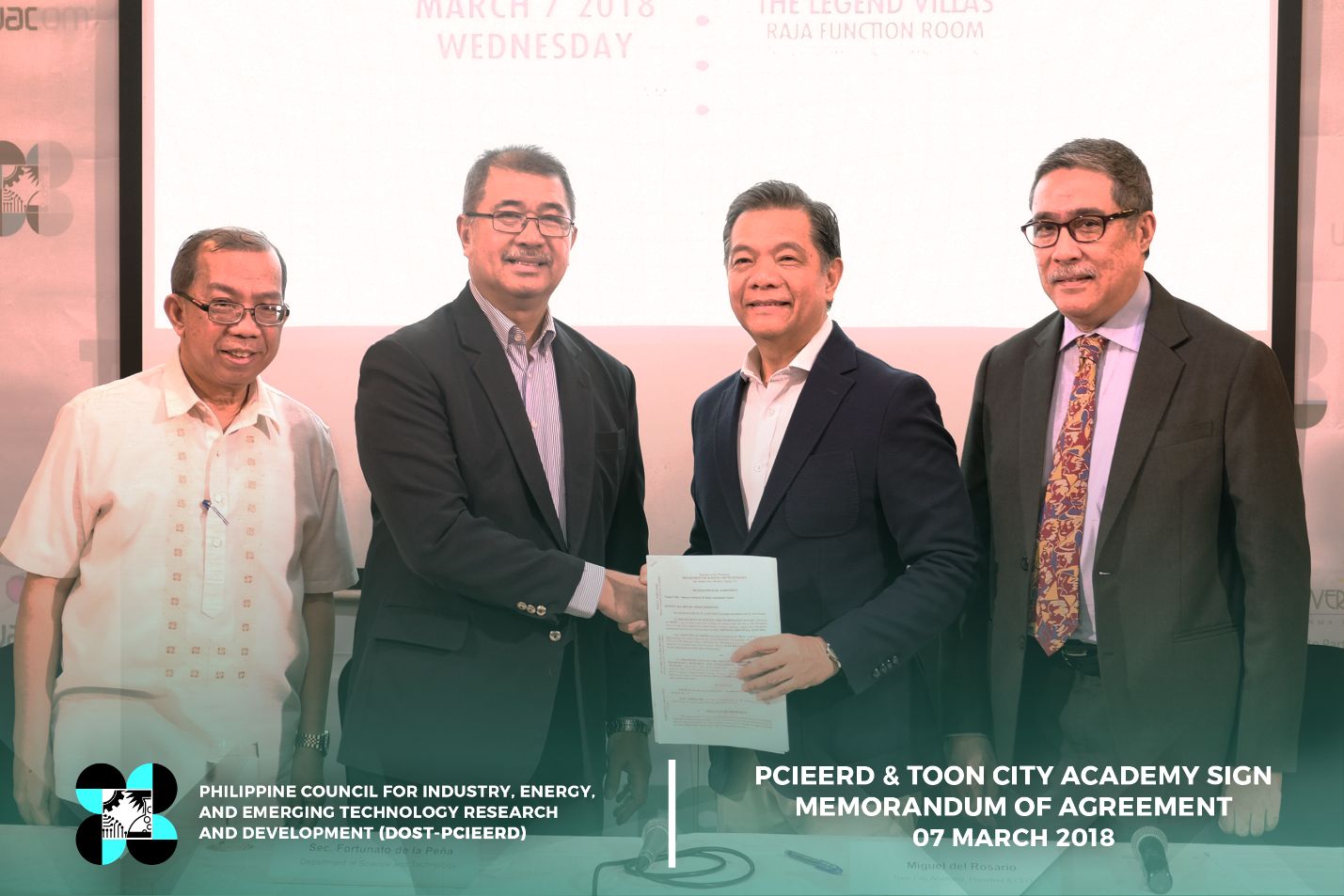The Philippines will mark another milestone with the launch of Maya-1, the first Filipino cube satellite, in space in July 2018. Implemented by the PHL-Microsat Program of the University of the Philippines Diliman, in collaboration with the Department of Science and Technology - Advanced Science and Technology Institute (DOST-ASTI) and the Kyushu Institute of Technology, Maya-1 was turned over to the Japan Aerospace Exploration Agency (JAXA) last May 15, to prepare for its launch.
The development of the Maya-1 falls under BIRDS-2 (Birds Satellite Project), a cross-border interdisciplinary satellite project that accommodates non-space faring countries. The project consists of 11 participating team members from four different countries – two of whom are from the Philippines.
The team behind Maya-1
The Philippine representatives of the BIRDS-2 Project (Left); and the Maya-1 (Right)
Kyushu Institute of Technology (Kyutech) students, Joven Javier and Adrian Salces, represented the Philippines throughout the project.
Master of Engineering student Javier is responsible for monitoring the development task progress of the project. Taking on the role as team leader for the whole BIRDS-2 batch, he is also in charge of supervising the project cycle, ensuring that all stages – from the preliminary design to the satellite operation – are running smoothly and accordingly.
PhD in Engineering student Salces, on the other hand, takes over managing the communication subsystem of the satellite. Moreover, he ensures the continuation of the establishment and operation of a ground station network, demonstration of the data collection system consisting of the CubeSat constellation, and the identification of all technical challenges of the system.
The Maya-1 in a nutshell
In line with the functionalities identified by the BIRDS Project, Maya-1 is set to take images of the earth using onboard cameras, broadcast signals from various satellites, and determine their locations, measure atmospheric density through orbital analysis, help operate a ground station network for CubeSat constellation - an application that will allow for easier telecommunication, and measure single-event-latch ups in orbit.
Just like how Diwata-1 and Diwata-2 paved the way for science to grow and flourish in the Philippines, Maya-1 will serve as a representation on how we strive to make our mark as a globally competitive country in the space tech scene.
The projects under the PHL-Microsat program are funded by the Department of Science and Technology and assisted by the Philippine Council for Industry, Energy and Emerging Technology Research and Development (DOST-PCIEERD).








